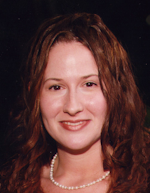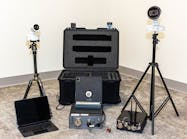App Makes Bystanders Key in Cardiac Arrest Survival
Citizens in a growing number of cities around the U.S. are now getting alerted when there’s an opportunity to perform bystander CPR, thanks to the PulsePoint phone app.
The Technology
The free app, which notifies trained citizens of nearby cardiac emergencies and the location of the nearest AED, was originally developed and tested by the San Ramon Valley (Calif.) Fire Protection District. It works by connecting a participating agency’s dispatch data into the PulsePoint service so that citizen alerts go out simultaneously with the dispatch of local fire and EMS resources. (Citizen alerts only go out for cardiac emergencies in public places, not to private addresses.) The app shows the victim and the nearby AEDs on a map, in context to the recipient of the alert.
The app has had several updates and releases since it first launched.“The app is in a continuous update cycle,” said San Ramon Valley Fire Chief Richard Price. “We’re working on a major new version right now.”
In February, after the program had been running locally in San Ramon for over a year, the PulsePoint Foundation opened it up to other agencies. It has quickly spread in California and nationally.
“By the end of the month we expect it to be in more than 100 cities,” explained Price, who is also the president of the PulsePoint foundation.
The largest city currently operating the program is San Jose, Calif. and its surrounding area, which covers more than a million citizens. Soon Los Angeles and L.A. County will be added, which cover a total of about 10 million citizens. The cities onboard from beyond California include Sioux Falls, S.D., several cities in Oregon, and soon Honolulu, Hawaii.
“Cardiac survival is a numbers game,” Price noted, so the more citizens are covered under the program, the more people should survive sudden cardiac arrests (SCAs). Currently the numbers are grim; survival rates nationally for SCA are less than 8 percent, and it kills nearly 1,000 people a day, according to the stats at PulsePoint.org.
The Success
The app has been activated more than 500 times since it launched, and it is now getting activated up to several times per day, Price said. The number will continue to grow as more cities get onboard.
Price noted that SCA victims may have about 10 minutes to survive, and that brain damage can occur within 4 to 6 minutes. “It’s an excruciatingly short opportunity to intervene,” Price said. “It’s hard for even the best systems to make an impact in that window of time.” This is where bystanders, or citizen rescuers, come in, and why it’s so valuable to increase the number of available “bystanders” to anyone in the area, not just those who witness the event.
People can watch on Twitter (https://twitter.com/1000livesaday) to see the live app activations and how many people are notified per incident, which depends on how many of those who are signed up for the service are within the locally prescribed response radius. (The app aims to notify those within walking distance, but the exact response radius is configurable by each agency. Those with higher population densities usually select a smaller radius, while those with low densities and longer EMS response times may choose to notify over a broader area.)
Price said that normally, professional responders to cardiac arrests find bystander CPR in progress only about 25 percent of the time. In San Ramon, that number is now approaching 50 percent, and there are often multiple citizen responders found on scene. When extra citizens respond, “we see bystanders able to rotate providing compressions and we have even found people clapping to 100 beats per minute,” Price said. “The app really reinforces the practices we’ve been teaching through public outreach, such as deploying a publicly-accessable AED and starting chest compressions quickly.”
SCA survival rates in the San Ramon Valley Fire District have jumped to 46 percent, and officials credit the PulsePoint app, along with several other best practices implemented throughout the agency and the community, for the increase.
However, there is not currently data to pinpoint the impact of the app on citizen CPR rates or how often AEDs were used, so a survey has recently been added to the app to ask those who received notifications several follow up questions. This will be part of a 3 year clinical trial funded by the Heart and Stroke Foundation of Canada. Price said. It will not be a goal of the project to determine how many “saves” can be attributed to the app, as there are too many additional factors to make that determination, he said.
Public Outreach
The real key to this program is public outreach, Price noted, because it depends upon trained and interested citizens. “You can deploy this technology, but if your citizens aren’t aware it won’t have any effect,” he said.
The best chance for quick intervention is to get as many citizens trained in CPR and AED deployment as possible.
“The agencies that already do a good job on CPR citizen will get the most impact (from the app) or there’s no one to notify,” Price said, “so it’s not a shortcut.”
In addition to all the traditional forms of public outreach, such as CPR training, appearances at community fairs, etc., it takes an extra push to promote the program. This includes playing the app’s PSA at theaters in cities that deploy it, and often includes joining efforts with other agencies and hospitals to help with promotion. El Camino Hospital played a large role in bringing the app to the Silicon Valley and promoting its use in the community.
Getting Onboard
The foundation provides information to assist cities with deploying the technology and deploying their public outreach campaigns.
The roadmap includes getting your agency’s dispatch system connected to the PulsePoint service. This requires compatible technology, the case for most modern CAD systems. The cost to make that interface will vary depending upon each agency’s technology and vendor.
Price noted that agencies also have to put work into locating and cataloging their AEDs, as many cities have little documentation on this, particularly those in private businesses.
“Most agencies have to step up their work around AEDs,” Price said. “You’ve got to know they’re there and working… it’s a higher standard if you’re going to be dispatching the information.”
Interested agencies should learn more about getting onboard by visiting http://pulsepoint.org.
The Experience at the Alameda County, Calif. Fire Department
Division Chief Scott Doan runs IT for the Alameda County Fire Department and its regional dispatch center. He first experienced the PulsePoint app as a citizen of San Ramon and was quickly sold on it.
“It’s the first thing I’ve seen in my career that I think is going to make a great change in SCA survival statistics,” he said.
Doan was able to bring his whole agency onboard by addressing questions and concerns about the technology and about calling upon citizens. (Most questions can be answered by viewing the PulsePoint website.) One of those questions was whether responders would actually want numerous bystanders on an emergency scene. “It hasn’t been a problem having to move them,” he said, “and if someone has started CPR we’ve hit a home run.”
The cost to get their system connected to the PulsePoint service was about $25,000, which was covered by the Alameda County EMS Agency.
Doan said the program has since been resoundingly accepted by those within the department, and has been extremely positive in the public and press.
“It’s getting a lot of attention here in the Bay Area,” he said. “It’s not often we can bring something so valuable for almost no cost.”
For others trying to get their agencies onboard, he recommends, “Speak to other agencies that have done it because we’re close a knit family.” They can talk about the experience, any negatives, and any advice, Doan suggested.
“The more fire departments get on the bandwagon I think the easier it’ll be,” he said.
Survivor and PulsePoint Spokesman, Joe Farrell
One of the strongest proponents of the app is PulsePoint Foundation member Joe Farrell. He saved a life by performing bystander CPR on a victim suffering sudden cardiac arrest at a golf course in 2007. A year later he became a victim himself, and was saved by a track coach after collapsing at a dinner party. He credits his survival and brain recovery to the bystander who used CPR, the use of an AED by paramedics, and the therapeutic hypothermia he received at the hospital – a procedure that had just been implemented.
“I was one of the lucky ones – I went home with a defibrillator in my chest instead of in a box,” he said.
Farrell is especially able to appreciate the value of brain recovery, he said, because as a physical therapist, he has treated patients with reduced brain function. “Those with brain damage can require 24-hour care,” he said. Aside from the issues of life quality, preventing brain damage could save billions per year in care costs, he suggests.
Since his recovery, Farrell and his wife have been advocates of public CPR training, quick access to AEDs and all the SCA related technologies. They serve on the HeartSafe Committee of the San Ramon Valley Fire Protection District, which has trained over 4.500 citizens in CPR and AED use in two years.
In addition to working toward getting agencies and districts onboard with the PulsePoint app, and then toward helping agencies with training and education, Farrell’s role on the board involves raising money to continue the development of the app and free availability.
“As a survivor – there aren’t a lot of us around,” he said. “I’m hoping in the coming years there are more of us.”
Recognition
Since its debut the PulsePoint app has received numerous awards from groups including the American Heart Association (AHA); International Association of Fire Chiefs (IAFC); Cellular Telecommunications and Internet Association (CTIA); VITA; Computerworld; IADAS; and the Telly Awards for its PSA. Additionally, Chief Price was invited to present the app at the White House’s “Safety Datapalooza” event in September.
Downloading the App
To install the PulsePoint app search PulsePoint in the Apple App Store or in Android Apps on Google Play.
Entering the Cardiac Science AED Giveaway
Visit the following link to read the contest details and to enter: http://www.firehouse.com/cardiac-science - the deadline is Dec. 21.

Heather Caspi | Managing Editor, News Team
Heather Caspi is an associate editor at EMSWorld.com and has been with Cygnus Business Media since 2000, serving various roles with all three public safety sites. She graduated from the University of Maryland with degrees in Journalism and English Language and Literature, and earned her EMT-B through Merritt College and the Oakland Fire Department in Oakland, California.






